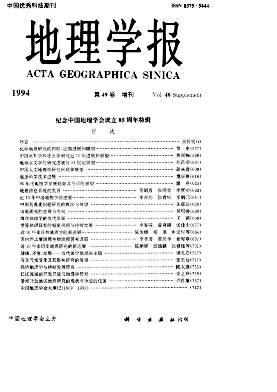Liang Qizhang, Liu Yue, Zhou Yingming
The National Economic Atlas of China been published both in Chinese and English versions.It is chiefly compiled by the institute of Geography, Chinese Academy of Sciences,the National Economic Information Centre and the Institute of Statistic Science under the leadship of the National Planning Committee,the National Statistic Bureau and Chinese Academy of Sciences. During the compilation of the atlas,an Intergrated Cartographic System(ICS)for map design and plate making has been established.This paper introduced the main technical characteristics of ICS.1.Design Destination of ICS :The System can not only meet the need of compiling the National Economic Atlas of China,but also meet the needs of some other future tasks. It should be estalished to be a multi-function computer assisted mapping system under a limited financial support.(1).An intergrated graphic processing enviroment.It can meet the needs of input,edit and storage of maps and various data,output of excellent maps or screen films which can be used to produce printed maps of high quality.(2).Powerful software resouses. It can process both all spatial and non-spatial data and can store and manage data in a unified way.It can also design maps,analyze data and output screen films which meet the needs for printing.(3).Enough storage space for building up cartographic database of the whole country and data processing.2.The System’s Configuration and its functions:In the present IGS,the mini-computer and PC-computers are connected into a unified system,and it has many devices for input and output,including abundant software resouses such as :Operating System,Programming Languages,ARC/INFO,PC ARC/INFO,SECS(Statistic Cartography Expert System),EAS(Electronic Atlas System),MAPIS(Vecterization by scan)and MCAD(Map color automatically design).3. Cartographic Database Including following cartographic data:(1).Point data. For exmple,the data of large and middle size enterprises are point data because they are counted by single enterprise as basic statistic uint.They have definite location and administrative ownership.Their spatial distribution reflects the layout,scale,type,product and equipment of the key enterprises in our contry. (2).Linear data. For example,communication and transportation data,such as road segment and hubs of communication are taken as basic statistic uints. They form the communication network of our country.(3).Area data. For example,statistic data in county(city)uint.They include industry,agriculture,population,education,hygiene and etc. They occuppy a maximum propotion in the atlas.4.The Procedure of data processing and mapping The general procedure in compiling statistic maps at the country(city)level has shown that because the cartography units are over 2300,the internal difference among cartographic indexes is large,and the frequency distribution changes greatly.It is very difficult to select the representation method and the classification method,to determine classifications,to select map symbol and to determine symbol size. It is necessary to output paper map for checking and repeat work can not be avoidable in the whole process. A statistic mapping software system has been developed to accomplish the mapping procedure quickly and improve the map design effectively.the main function of this software system is brieflv listed as follows:(1).Application of statistic analysis method.It can not only caloulate the mean,absolute value,median,standard deviation,deviation,percentage,frequency and display the histogram. but also provide the function such as histogram edit on screen, changing the histogram at a different scale horizontally or vertically,automationlly determining the calssification and evaluating the accuracy of the calssification.(2).Overlay processing,displacement and zoom. It is widely used in compiling the statistic symbol maps. The overlay processing includes the overlay processing of circular symbols and rectangular symbols. Because of these functions,the map quality is improved largely.(3).Software for color design and plate making.
